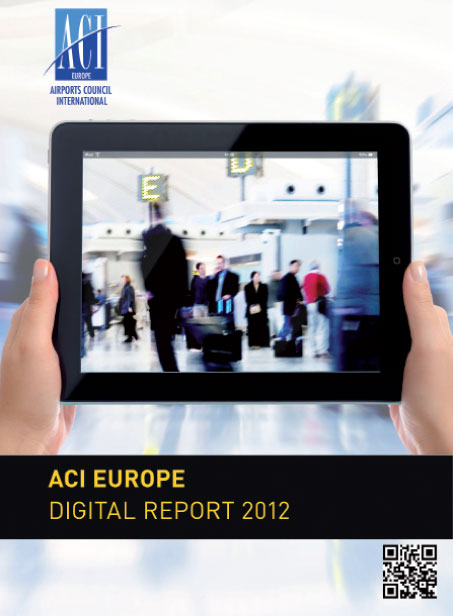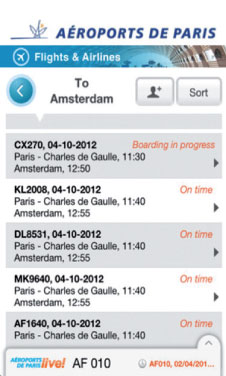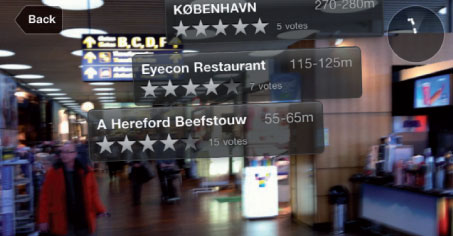
According to the ‘Digital Report 2012’, in 2011 64% of European passengers passed through a ‘social media’ airport, but this number had increased to 77% by April 2012.

A number of airports and airport groups already offer smartphone apps, including Aéroports de Paris and Schiphol Group, both of which have developed a specific function for Chinese travellers.
The fast-moving digital era has changed so many aspects of the aviation industry, in particular the way in which airports and passengers are communicating with one another. With the extraordinary rise in the percentage of passengers who carry a smartphone or similar mobile device, airports are embracing digital media as both a promotional and communication tool. The new ACI EUROPE report provides an insight into the latest digital trends that have become engrained as part of the day-to-day operation of an airport.
Four key findings are highlighted at the top of the report: airports are becoming more and more dynamic as they respond to increased competition; service quality to the passenger is paramount; the future will rely upon industry cooperation; and the digital trends centre of gravity is shifting to the east of the continent.
Facebook vs Twitter
The increasing role of social media is aptly highlighted by a year-on-year comparison between 2011 and 2012. For instance, in 2011, 64% of European passengers passed through a ‘social media’ airport, but this number had increased to 77% when the report was published in April 2012. Of ACI EUROPE’s member airports, 57.14% are using social media this year, rising from 40% in 2011.

91% of airports or airport groups with a social media presence have a Facebook page, while only 65% have a Twitter feed. That said, the majority of users see the value in both media, with 56% of airports opting to have a presence on both platforms.
“It can truly be said that airport social media usage has fully entered the mainstream,” the report states. “Looking into this further, we can see that airports have continued their strong preference for Facebook above Twitter. 91% of airports or airport groups with a social media presence have a Facebook page, while only 65% have a Twitter feed. That said, the majority of users see the value in both media, with 56% of airports opting to have a presence on both platforms.”
Among the users themselves, the number of ‘likes’ per airport Facebook page has significantly surpassed the average number of ‘followers’ per airport Twitter account. In fact, Facebook airport ‘likes’ grew three times faster than Twitter airport ‘followers’ in the last year, seemingly justifying the airports’ decision to place more emphasis on the former.
Across both platforms, it is Central and Eastern Europe that has the most impressive growth rates, with airport social media users increasing by 800% over the 12-month period.
As well as the growth in the overall usage of social media, the Digital Report 2012 also highlights a growing maturity in the way in which the social media platforms are being used. Accounts are being updated more frequently, there is more coherence in these updates, there are less ‘ghost’ or duplicate accounts that have not been updated for a long period of time, and there is evidence of a strategic ‘split’ between how the respective platforms are used.
Aside from Facebook and Twitter, airports are also embracing other platforms, albeit with different objectives. Another platform that is also being used more frequently is YouTube. The survey shows that more than a thousand confirmed videos uploaded by European airports have been watched over 2.1 million times; an average of almost 2,000 views per video. As with last year’s ‘Airports 2.0’ report from ACI EUROPE, the Digital Report 2012 highlights five key ways in which airports are making use of social media. These are: corporate communications (used by 89% of airports); crisis communication (87%); commercial promotion (82%); informal engagement (74%); and customer service (51%).
‘Mobile revolution’

To support the use of mobile technology, the majority of European airports now offer charging facilities and 98.7% of all airports in Europe offer internet access to their passengers.
The so-called “mobile revolution” is another key factor highlighted in the report that could have a “profound” impact on the way in which airports and passengers will communicate with one another in the future. Already, a number of airports and airport groups offer full-service apps, including Aéroports de Paris and Schiphol Group, both of which have developed a specific function for Chinese travellers. Copenhagen Airport also offers an ‘Augmented Reality’ app, which makes use of geo-locational technology to allow passengers to view the airport through the camera lens on their mobile device and get directions to a point of interest.
The surge in the use of smartphones and other electronic devices opens up a number of opportunities. For instance, live queuing can be displayed at security, tailored retail offers can be promoted, and dynamic wayfinding can be provided and linked in with live information feeds on gate closure and flight departure times. To support the use of mobile technology, the majority of European airports now offer charging facilities, while 98.7% of all airports in Europe offer internet access to their passengers, over half of which provide some form of free access.
Commenting on the findings of the report, Olivier Jankovec, Director General, ACI EUROPE, said “These latest key figures show just how much more direct the relationship between the airport and the passenger has become. Europe’s airports are making a wide variety of information immediately available on a smartphone or similar device, empowering passengers to make their experience of the airport as informed and hassle-free as possible. The diverse ways that airports are engaging with passengers and developing joint communications with airlines are a clear demonstration of how they are investing in technology to boost their competitive positions.”
As this edition of Airport Business was going to print, The Moodie Report revealed that it is launching the world’s first airport-specific digital, mobile and social media awards, dubbed ‘The Moodies’ – more evidence of just how mainstream ‘digital facilitation’ has become.
To download the ACI EUROPE Digital Report 2012, go to http://bit.ly/J8Fu3T

Copenhagen Airport’s ‘Augmented Reality’ app makes use of geolocation technology, allowing passengers to view the airport through the camera lens on their mobile device and get directions to a point of interest.







